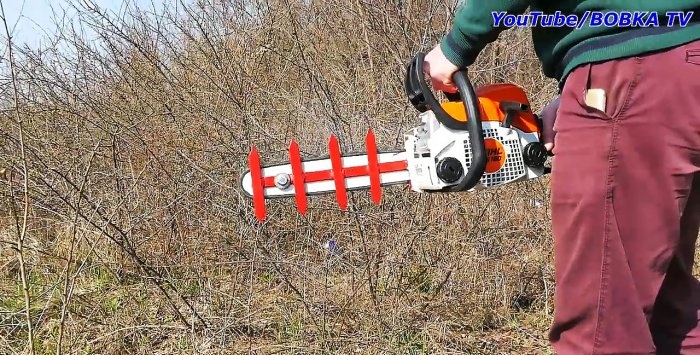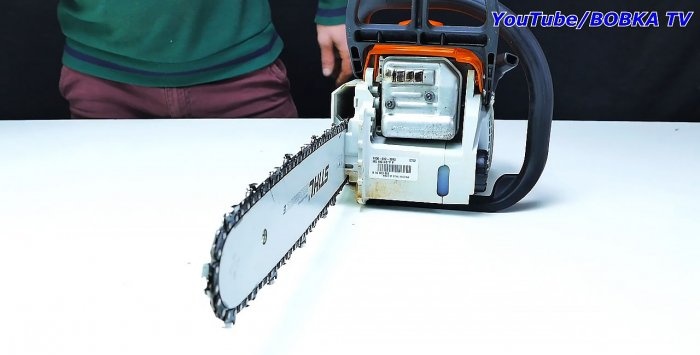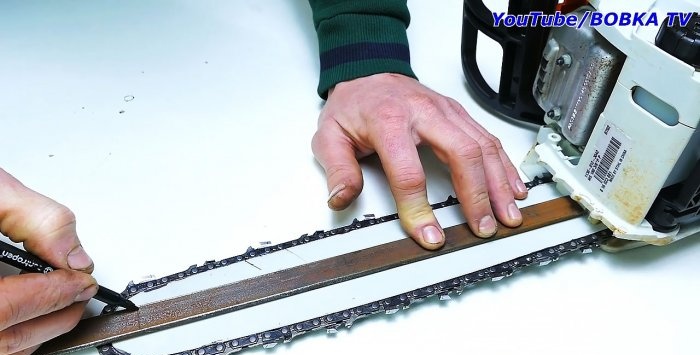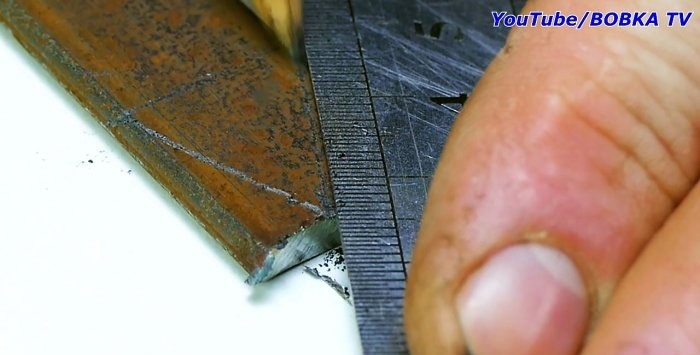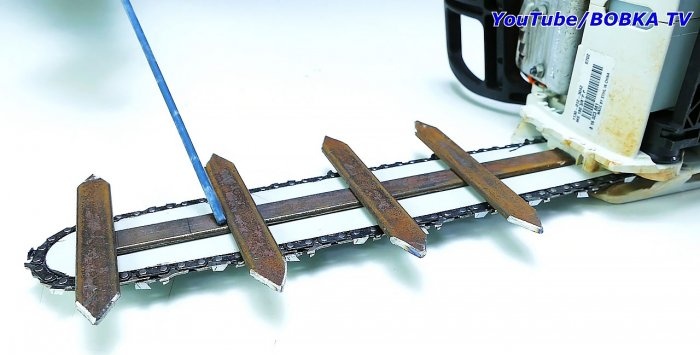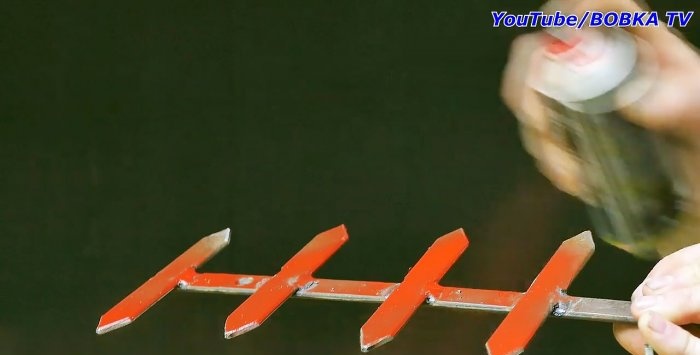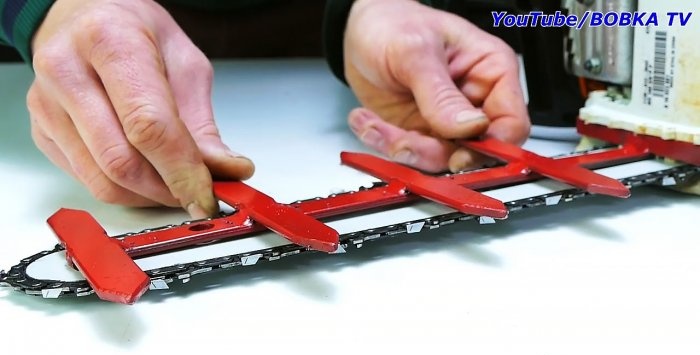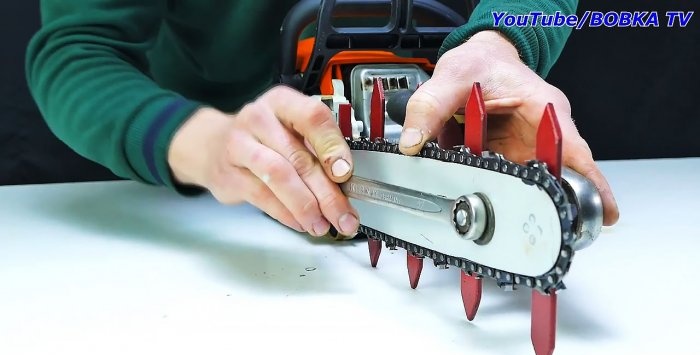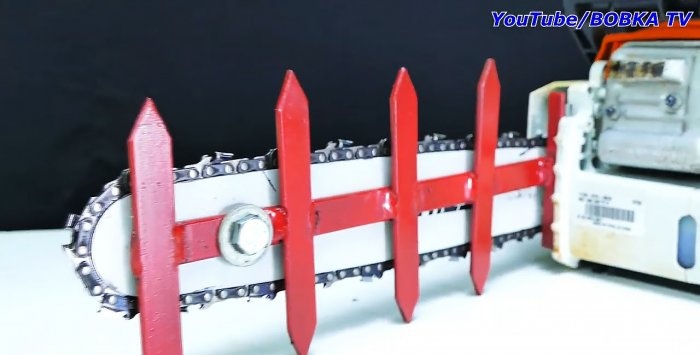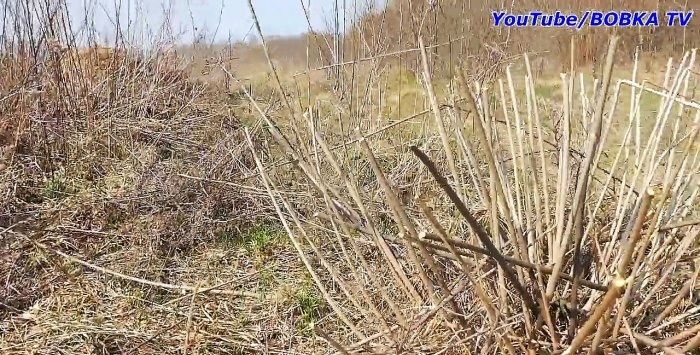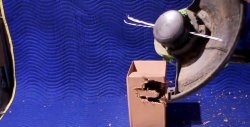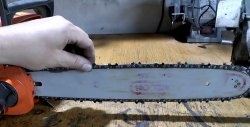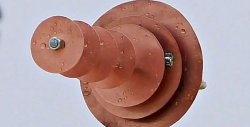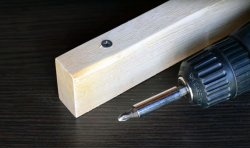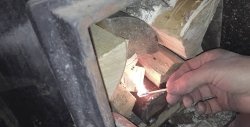How to turn a chainsaw into a hedge trimmer, homemade removable equipment
When the land is not taken care of, all kinds of weeds, shrubs and trees grow wildly on it. Moreover, even cultivated plants begin to run wild - one can no longer expect any benefit from them, but they create many problems.
Removing such “game” with a hand hacksaw is tedious and unproductive; chopping with an ax is no easier and also ineffective. Even the best chainsaw will not help: thin and flexible stems will slide off the saw chain with almost no damage.
You can get out of this situation if you equip your chainsaw with a device that will not allow the stems of bushes and young trees to slide off the saw chain. Then you can quickly and easily clear the area of spontaneously overgrown bushes and trees.
The device to be made and installed on the chainsaw will consist of a longitudinal strip equal in length to the guide bar, with transverse pointed strips welded to it, protruding from the top and bottom beyond the guide bar. Their purpose is to cut and hold the stems of bushes and trees on the saw chain.
Place the chainsaw with the guide bar on a flat surface. Using it as a template, measure the length of the metal strip and mark this place with a pencil.
Using a grinder, cut off the required length according to the mark.
Also, focusing on the width of the guide bar, we determine the length of the transverse elements of the device. In total, we cut off 4 identical transverse elements according to the markings.
We mark the sharpening of the transverse stripes on both sides with a ruler and pencil and use a grinder to complete it.
We lay out the transverse strips evenly along the length, starting from the outer end of the longitudinal strip, and mark with a pencil the places where they are welded.
We perform “peak” welding to the longitudinal base according to the markings.
At the end closest to the engine, we weld a strip that will go under the flange of the housing and serve as the front fastening of the device to the chainsaw.
Between the first from the end and the second cross member, we drill a hole in the longitudinal element, specifying the location according to the existing hole in the guide rail.
We paint the structure with red paint from an aerosol can.
We place the device as a longitudinal element on the guide bar, placing the cross member under the flange, and finally secure it with a bolted connection at the other end of the bar.
Essentially, we turned a chainsaw into a chain trimmer with our homemade device.But a classic gasoline scythe operates at high speeds, which cannot be said about a saw chain. However, we compensated for this by the presence of transverse “peaks” that hold the stems on the saw chain, and it easily cuts them individually and even in a group, despite the low speed.
Removing such “game” with a hand hacksaw is tedious and unproductive; chopping with an ax is no easier and also ineffective. Even the best chainsaw will not help: thin and flexible stems will slide off the saw chain with almost no damage.
You can get out of this situation if you equip your chainsaw with a device that will not allow the stems of bushes and young trees to slide off the saw chain. Then you can quickly and easily clear the area of spontaneously overgrown bushes and trees.
For this you will need:
- chainsaw of any brand;
- black metal strip;
- grinder with cutting disc;
- metal ruler and pencil;
- fasteners consisting of a bolt, nut and two flat washers;
- a can of red spray paint;
- spanners.
Improvement idea
The device to be made and installed on the chainsaw will consist of a longitudinal strip equal in length to the guide bar, with transverse pointed strips welded to it, protruding from the top and bottom beyond the guide bar. Their purpose is to cut and hold the stems of bushes and trees on the saw chain.
The process of making equipment for a chainsaw
Place the chainsaw with the guide bar on a flat surface. Using it as a template, measure the length of the metal strip and mark this place with a pencil.
Using a grinder, cut off the required length according to the mark.
Also, focusing on the width of the guide bar, we determine the length of the transverse elements of the device. In total, we cut off 4 identical transverse elements according to the markings.
We mark the sharpening of the transverse stripes on both sides with a ruler and pencil and use a grinder to complete it.
We lay out the transverse strips evenly along the length, starting from the outer end of the longitudinal strip, and mark with a pencil the places where they are welded.
We perform “peak” welding to the longitudinal base according to the markings.
At the end closest to the engine, we weld a strip that will go under the flange of the housing and serve as the front fastening of the device to the chainsaw.
Between the first from the end and the second cross member, we drill a hole in the longitudinal element, specifying the location according to the existing hole in the guide rail.
We paint the structure with red paint from an aerosol can.
We place the device as a longitudinal element on the guide bar, placing the cross member under the flange, and finally secure it with a bolted connection at the other end of the bar.
Result
Essentially, we turned a chainsaw into a chain trimmer with our homemade device.But a classic gasoline scythe operates at high speeds, which cannot be said about a saw chain. However, we compensated for this by the presence of transverse “peaks” that hold the stems on the saw chain, and it easily cuts them individually and even in a group, despite the low speed.
Watch the video
Similar master classes
Particularly interesting
Comments (0)

